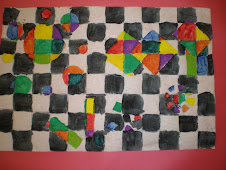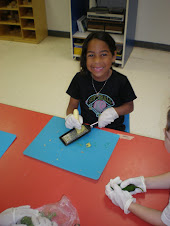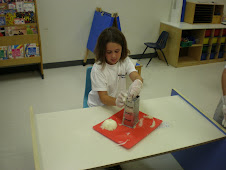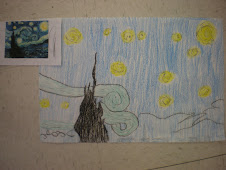Over the summer, the summer school children helped the PreK children work on bird nests as part of a bird project. As the project grew, more children from other classes became interested in birds. Annika took the bird nest she helped work on into the Kinder and First Grade classroom during the first week of school. This continued an in-depth study of concepts, ideas, and an interest in birds with the Kinder and First Grade children.
As we began to introduce the skills the K-1 class was to master, we incorporated the study of birds. The children used the computer lab and books to research different types of birds. Each child chose a bird to study.
For reading and spelling, the children were given word lists that described birds. We used words that helped the children categorize birds. Birds are birds because they have - Feathers, Wings, Hollow Bones, Beaks and they lay Hard Shelled Eggs.
The children used the word list over several days and did different activities to help practice handwriting. We gave each child a paper with a picture of his/her bird and the children labeled the bird according to the word list. This helped the children sound out the words to practice our reading skills.

Two days a week we visit the art studio, and on this particular day the children created art pieces to represent his/her bird. The children studied the birds with the art director to observe shapes and details in the birds. Some of the children chose water color, while others chose to make their birds out of clay.

We began to study where birds lay their eggs. This allowed us to begin to research nests in different habitats, how birds molt and "camouflage" if they do not migrate in the winter, and to study their life cycle. We worked on a program in the computer lab to help the children learn the life cycle of the bird.
One of the children brought in a humming bird nest, and when the children saw how small it was, the question came up of how big the eggs were. Annika researched their question on line and found the measurements of the humming bird egg. She used clay to create 2 eggs (since we learned that humming birds only lay 1 to 2 eggs) and put them in the humming bird nest. That lead to the children wanting to know what was the biggest egg a bird could lay. They wrote out their question and typed it in the computer. We found out it was an Ostrich egg! Annika used paper mache to create a model of the egg after they recorded the measurements.
We have continued to research more sizes of eggs and we recreated a duck egg, and found out that an Elephant bird used to be alive and it laid the biggest egg. It is now extinct, which is why the Ostrich is now the biggest.

We have our "egg display" in a display box in the hallway!
This was the perfect opportunity to introduce graphing. We used our measurements and created a graph to show the difference in sizes.


We will use our graph to compare our data, and create math problems to understand what information the graph can help us learn.

Annika suggested that we take a field trip to Castle Park, where she knows some ducks lay their eggs in a hollow tree. We will use this trip to learn about habitats and make real life observations about the environment. We will take samples to bring back and observe in our microscope, chart our observations, and introduce the concept of living vs. non living organisms.
Our visit to the park and the details on the progress of our project will be posted soon!!!!
















































No comments:
Post a Comment